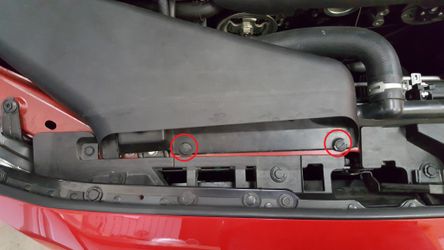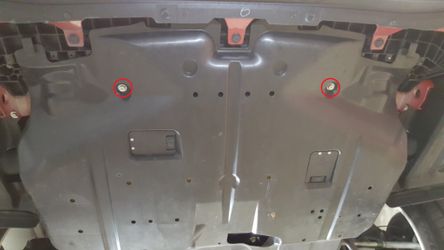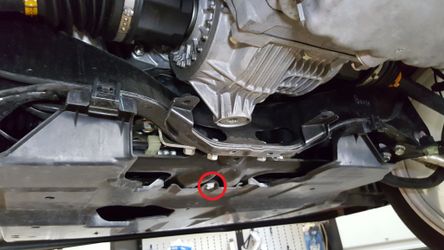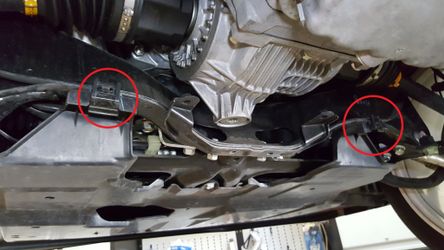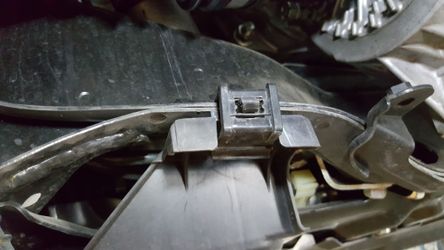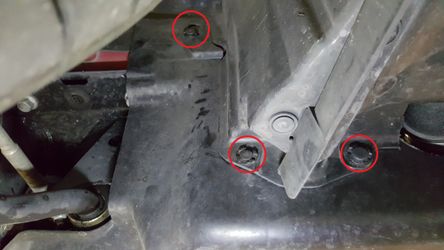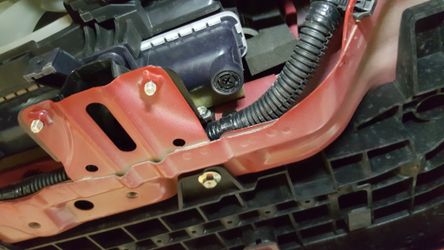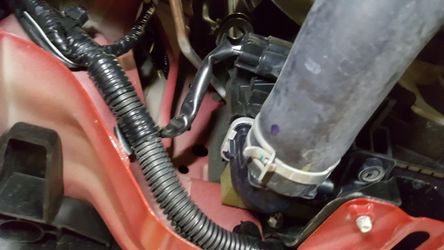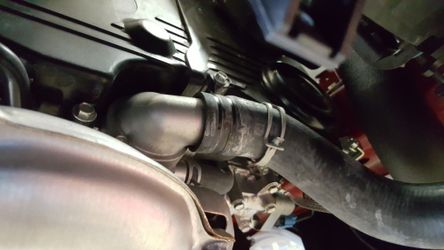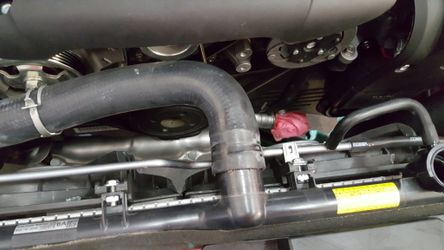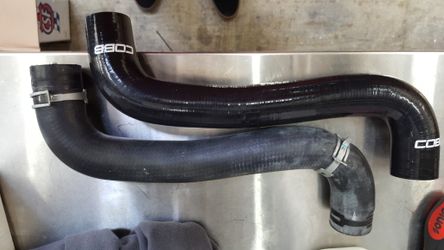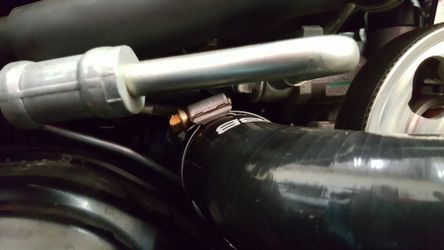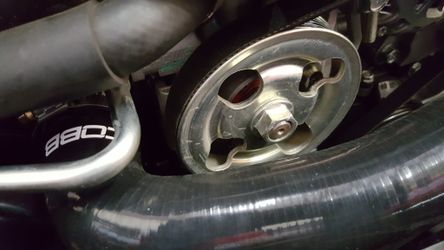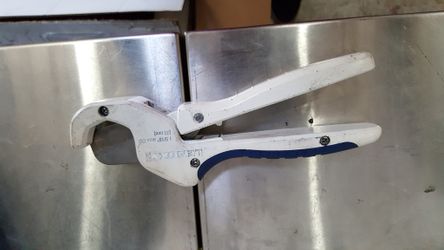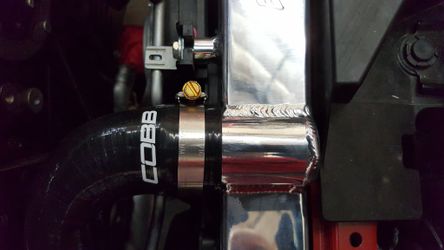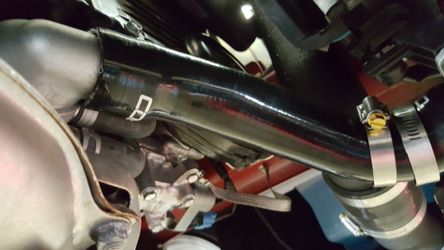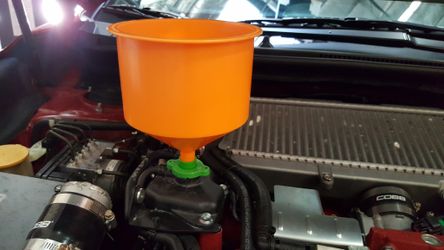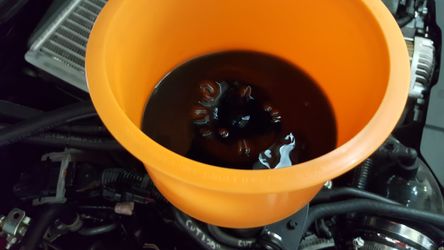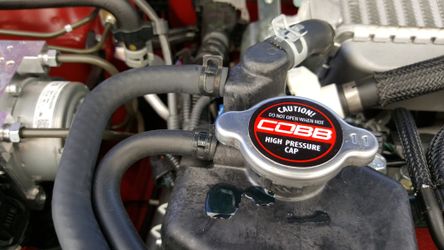B22400 – Silicone Radiator Hoses for Subaru
Subaru Wrx 2008-2014
Subaru WRX STI 2008-2019
Congratulations on your purchase of the COBB Tuning Silicone Radiator Hose Kit! The following instructions will assist you through the installation process. Please read them BEFORE beginning the install to familiarize yourself with the steps and tools needed. If you feel you cannot properly perform this installation, we HIGHLY recommend you take the vehicle to a qualified and experienced automotive technician.
Table of Contents
| Table of Contents |
|---|
Parts List
- XLE BPV
- Loctite 545 pipe thread sealant
- (3) feet of 6mm vacuum hose
- Barb fitting
- (2) Hex plug
- Allen key
Upper Radiator Hose - Lower Radiator Hose
- (4) Hose Clamps
Tools Needed
Stock Radiator Removal
- Put your car on a safe level area and allow it to cool down. When in doubt let it sit longer, as coolant can hold heat for quite some time and severe burns are possible if you don't take your time.
- Using a flat-blade screwdriver loosen the plastic clips retaining the air inlet scoop and then remove them using a trim tool. Once both are taken out remove the whole assembly from your engine bay.
- Now is a good time to remove the coolant reservoir cap above the head of the engine. This will help the coolant drain out a little bit more easily.
- Lifting the car up and supporting it on jack stands, start to remove the under tray by removing the two 12mm bolts at the front and single 12mm bolt at the rear
- Next remove the two clips at the rear by pulling down on the bottom part and gently rocking the clip towards the rear of the car. They can be a bit tight, but make sure you don't pull hard enough to break them as they can get brittle over time.
- On each side remove the three trim clips by pulling outward on the middle component to loosen, and then gently pry the lower half out. After all of them are removed you can lower and remove the skid tray from your vehicle. Set it somewhere out of the way.
- Next position a drain pan or container to collect the coolant and remove the drain plug using a phillips head screwdriver
- Using the drain plug can take a long time, however it's generally the cleanest way to do it. If you're impatient (or it's done draining) you can start on the lower radiator hose. Using needlenose pliers squeeze the spring clamp together until it locks in place fully expanded. A good way to get the hose loose at this point is to gently try twisting it back and forth to break the seal between the lower hose and the radiator. The stock hose clamp is small enough that it can be difficult to remove with the lower hose so oftentimes it's easier to hold the clamp over the radiator fitting while pulling the lower hose free. Even if the radiator is completely drained more coolant will come out at this point since the hose will also drain additional coolant from the engine block as well.
- Use the same procedure to remove it from the opposite end. This is also a good time to replace the thermostat if needed since the whole system is drained.
- Use your pliers again to remove the clamps and pull the upper radiator hose free from both ends.
COBB Radiator Hose Installation
- Now it's time to install the new hoses! Make sure the surfaces the hoses connect to are clean to avoid contamination or leaks.
- Take care to orient the new hose clamp on the engine side in a way that you can still have access to tighten it as clearance gets pretty tight in this area.
- On some vehicles you may need to trim the upper radiator hose as the thicker core can angle the hose back enough to hit the belt. Usually you'll want to trim it back on the radiator end as trimming it on the engine side can pull it even closer to the belt. Trim with a hose cutter to ensure a good clean cut.
- Tighten the upper radiator hose down. Make sure the hose clamp is past the barb before you tighten it down.
Bleed Cooling System
- With everything installed head back up top and start filling up the radiator slowly, make sure to keep checking for leaks as you go and adjust hoses/tighten as needed.
- Once the radiator is filled up squeeze the hoses to try and get rid of as many air bubbles as possible, be careful as squeezing too hard too quickly can get coolant all over your engine bay.
- With as many of the air bubbles removed as you can go ahead and put the radiator cap back on. Keep in mind that the radiator cap and coolant reservoir cap typically look very similar, however the reservoir cap will be rated at a lower pressure so when in doubt refer to the stamped numbers that refer to the pressure rating in BAR.
- Now head up to the coolant reservoir and begin to fill it up from there.
- Now it's time to bleed the coolant. This is an important step and can get a little bit time consuming, however any pockets of air can cause issues with overheating or incorrect coolant temperature settings.
- While not necessary, coolant bleeding funnel like this one can make things a whole lot easier as they come with fittings to mount directly to the cap and allow the system to bleed and fill itself at the same time.
Keep in mind that any coolant in the funnel will get just as hot as the rest of the coolant in the engine so use caution to avoid burns. - With the system full turn on the vehicle and crank up the heater all the way. By having the heater on the coolant can circulate through the heater core which will remove air bubbles from that portion of the system. Make sure to keep an eye on your coolant levels at the tank or in the funnel so that the car doesn't add any more bubbles into the system.
- Once the coolant stops bubbling you're all done with the bleeding! This can take a while (it took around 30 minutes on our car). While it's bleeding make sure to keep an eye on the coolant temperature in order to make sure your car isn't overheating and that the fans are cycling on and off properly.
While idling the radiator will got very hot quickly, be careful to avoid burns. - Place the plug securely down in the funnel and remove it from the car. Put remaining coolant back in the bottle.
- Reinstall the Coolant reservoir cap.
- After the car cools down again it's time to go ahead and re-install the skid tray with the three bolts, 6 trim clips. and two plastic latches.
- Go out and enjoy!
Links
CSF7042 - CSF 2-Row Subaru Aluminum Radiator
800620 - COBB 1.1 Bar Coolant Reservoir Cap
Subaru Installation InstructionsCOBB Product Install Instructions for Subaru Vehicles
Main Installation Instruction Repository for Subaru Parts
| Insert excerpt | ||||||
|---|---|---|---|---|---|---|
|


